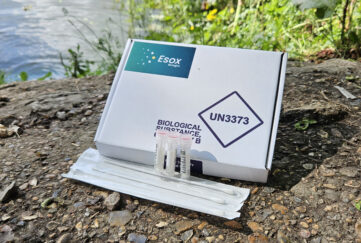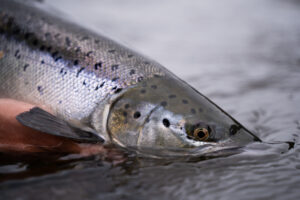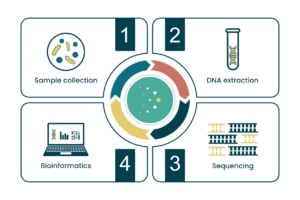The Power of Metagenomics

State-of-the art DNA surveillance can surpass current diagnostics approaches
Aquaculture is under pressure. Last year’s Salmon Production Survey revealed that even though output marginally increased in 2021, the general trend of decreasing Year 2 survival continues. This alarming drop in fish health also results in economic loss.
Mortalities arise when animals succumb to stress induced by an imbalance in their physical, chemical and biological environments. This can be routinely monitored, with data accessed remotely. Similarly, meteorological monitoring is habitual and seamless. Emerging companies even offer stress monitoring services using blood markers.
We are increasingly aware, however, of the role that the biological environment plays in the emergence of disease. Metagenomics, the study of all genetic information found within an ecosystem, has the potential to unlock a world of secrets, key to supporting animal welfare and reducing mortalities.

Atlantic salmon
All animals are susceptible to infection and aquatic species are no exception. As aquaculture expands, so too does the number of animals living in close proximity, increasing the propensity of diseases to spread.
Pathogens are disease-causing organisms. Many have become infamous within aquaculture: Flavobacterium psychrophilum, Yersinia ruckerii, Neoparamoeba perurans and Tetracapsuloides bryosalmonae all have a familiar ring. However, they are ubiquitous and do not exist in isolation, making up complex microbial communities known as microbiomes. Livestock are continually exposed to fluctuating populations within this potentially disease-causing concoction.
Traditional diagnostic methods, including both molecular and histological techniques can be used to confirm the causative agent and inform treatment, but only offer reactionary insights once diseases emerge. Unfortunately, many microbes remain uncharacterised and poorly described.
What if we could see red flags early, detect emerging pathogens, forecast seasonal outbreaks and identify antibiotic resistance genes? Unsurprisingly, the industry is now searching for solutions to anticipate disease, inform treatment strategies and do so with time to spare. The battle against infectious disease is where the industry now craves innovation the most.

Esox workflow
Metagenomics has entered the field, bringing with it the ability to monitor total microbiomes. It uses next generation DNA sequencing and sophisticated bioinformatics pipelines to identify organisms from their unique genetic code. It can accurately detect high-risk pathogens alongside their previously unknown counterparts. Gradually databases of characterised species can be built, and the intricacies of microbiome population dynamics further revealed.
Effective disease prevention strategies are only possible if we possess an intimate knowledge of the conditions that give rise to them. All infectious diseases contain a pathogenic culprit, typically microbial in nature. Metagenomics is now revealing the genetic and molecular architecture of all micro-organisms residing within aquatic environments, learning about their relationships with one another and the animals they infect.
Using these ground-breaking insights into aquatic microbiomes, Esox Biologics ushers in a new era of precision diagnostics, identifying detrimental changes in microbial populations, long before pathology and clinical symptoms appear.
Metagenomics offers a way to control disease risk, inform treatment strategies and protect farm health.
If you’d like to find out more or trial our service free of charge, please contact our Product Manager, Ben Mackrow at benmackrow@esoxbio.com


